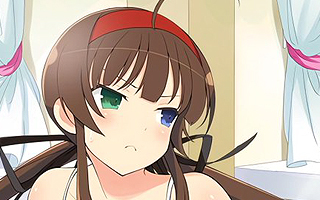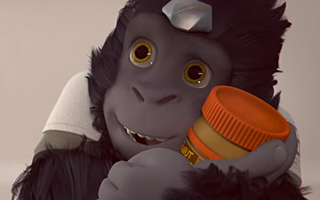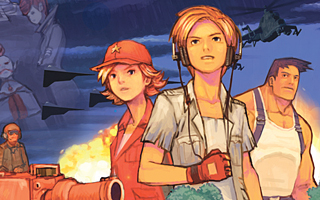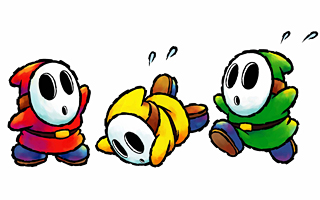Nintendo Wii
Top 10 Best Nintendo Wii Games of All Time!
After the market failed to embrace the GameCube, Nintendo went back to the drawing board. Leaving the console arms race behind them, Nintendo decided to do something radically different than their competitors. Although the Wii was considerably less powerful than other consoles of the era, it drew a much larger audience thanks to its revolutionary controller. By making use of intuitive motion controls, Nintendo was able to attract consumers who would not otherwise be interested in video games. Wii Sports was an immediate hit and Wii Fit helped change the way people think of video games, but the success of the system caught third-parties by surprise. To their credit, Nintendo managed to satiate their core audience while still finding time to cater to casual players. The Wii didn’t offer a lot in the name of processing power or graphical performance, but it represented something new and exciting nevertheless.
10
No More Heroes 2: Desperate Struggle
2010

Rather than anchoring itself down with realism, the No More Heroes series embraces the video game medium with scenarios that are intentionally absurd. The game essentially plays like a modern beat ’em up, and you’ll spend most of the game mowing down waves of enemies with a Star Wars-inspired beam katana. The action is pretty mindless for the most part, but players have the ability to parry, evade, slide, and perform various suplexes and throws. The gameplay mostly relies on button inputs, but motion controls are used for sparingly for super moves. This gesture-specific maneuvers give the game a visceral feeling. No More Heroes 2 is more streamlined than its predecessor and dropped the forced sandbox elements of the first game in favor of 8-bit inspired mini-games that allow players to earn money between battles. These mini-games help break up the action and prevent the game from feeling too repetitive. The best aspects about the game is its ridiculous characters. An interesting dichotomy can be seen in the manner in which Travis Touchdown manages to be a complete badass and a giant nerd at the same time. When he’s not busy killing rival assassins, he devotes most of his time to anime, porn, and professional wrestling. The characters in the series are all over-the-top and completely self aware. You’ll fight a rapping priest, an anime girl with a powersuit, and a cosmonaut who seems to think that the Cold War never ended. At one point, a football player wearing a mecha suit flies into space with a troupe of cheerleaders before uniting into a skyscraper-sized robot. Travis’ responses to this event is, “I thought something like this might happen.” He then rides his bike off a ramp before entering a Megazord-like robot of his own. No More Heroes 2 is obviously mindful of the fact that video games have the freedom to do whatever they want to.
9
Donkey Kong Country Returns
2010

The Donkey Kong Country games on the SNES were hugely successful from both a critical and commercial standpoint, but the series was nowhere to be seen for the next two console generations. Donkey Kong Country Return featured the same vine-swinging, barrel-throwing, mine-riding action the original trilogy had, but it didn’t rely entirely on nostalgia. The ability to interact with background elements and cling to various surfaces allowed for more interesting level designs. The platforms were constantly crumbling, rotating, and shifting position, so Returns was also more relentless (and potentially frustrating) than its predecessors. The pattern-based bossed battles offered more challenge as well. Donkey Kong Country broke new ground with the use of pre-rendered graphics, but Returns is just as visually creative. The levels where the characters appear as silhouettes were particularly stunning and have since become a staple in the platforming genre. Donkey Kong Country Returns was a brilliant return to form for our favorite ape, and was yet another game that made me question why the industry ignored 2D platformers for so many years.
8
Zack & Wiki: Quest for Barbaros’ Treasure
2007

Zack & Wiki was one of the first “must have” games released exclusively on the Wii, but the colorful exterior scared a lot of people away. I personally thought that the characters were charming, and the pirate theme gave the game an unmistakable One Piece flare. A lot of people felt differently. In fairness, the game’s title was childish, the early puzzles were pretty easy, and the high-pitched dialogue sounded like baby talk. It’s unfortunate that so many people overlooked the game, as it’s quite challenging and incredibly rewarding. If you enjoy puzzles or if you have an affinity to classic LucasArts “point and click” adventure games, you’ll probably fall in love with Zack & Wiki. Few games require you to pay so much attention to your environments. Players have the uncanny ability to turn animals they encounter into items which can be used to avoid obstacles or take down enemies. The scenarios can seem completely absurd at times, but the puzzles themselves are all based in logic. You’ll chop down trees to create makeshift bridges, sedate goblins by spiking their stew with sleeping mushrooms, and make keys by freezing water in molds that you created. Most of the puzzles are too complex to adequately explain here, but that’s one of the things that makes the game so fantastic in the first place. Zack & Wiki can be enjoyed by gamers of all ages and contains some of the most clever puzzles in the history of the medium.
7
Super Smash Bros. Brawl
2008

The third entry in Nintendo’s crossover fighting game franchise follows the same formula that its predecessors used. The gist of the series involves Nintendo characters entering battle arenas, beating the crap out of each other, taking advantage of random items, and trying to avoid falling to their doom. The series is a lot more frenetic than typical fighting games, and this is accentuated by the fact that up to four people can play at a time. The series could be described as a marriage between fighting games and party games. Melee is possibly the most beloved GameCube game of all time, but Brawl improved upon it in several meaningful ways. The roster was increased from 26 to 39 and included fighters from third-party games. The game made Sonic the Hedgehog seem relevant again, and it was great to see Solid Snake from Metal Gear out of his element. Brawl featured more stages, more modes, more trophies, and more items than Melee. It also allowed players to construct their own stages and was the first in the series to support online play. It looked better, it sounded better, and it had more content. Melee is still considered to be the superior game, however. The gameplay in Melee was faster and allowed for advanced techniques (like wavedashing and L-cancelling) that made the game a lot more competitive. In contrast, Brawl introduced random elements (like tripping) to prevent the game from being overly competitive. Brawl is the least competitive game in the series, but it’s more accessible to beginners and more fun to play with casual gamers. The game gets a lot of flack from the competitive gaming community, but Brawl was clearly a labor of love and it was impressive to see so much content packed into one game.
6
Punch-Out!!
2009

Punch-Out!! is an arcade-style boxing game that basically feels like a tribute to the original NES version from 1987. The game has optional control methods that use motion controls and even the balance board, but it’s meant to be played by holding the Wii remote sideways like an NES controller. The game demands that players have ridiculously quick reflexes, so key to success is recognizing patterns in your opponents’ movements and expressions in order to predict their moves beforehand. Punch-Out!! is a textbook example of a game that looks better in motion. The game runs at 60 frames-per-second like most of Nintendo’s first-party titles, but the quality of the animation is more akin to what you’d expect to see from Disney. The gameplay stays close to its NES roots for the most part, but it brings things to a new level with the inclusion of the “title defense” mode. After winning the title, you have to defend your championship against a vengeful group of fighters who have learned from their mistakes. Glass Joe wears headgear to fend off your punches while King Hippo uses duct tape and a manhole cover to protect his vulnerable belly. All of the fighters have new moves and patterns, so it almost feels like you’re playing a completely different (and more difficult) game. Punch-Out!! is arguably the most simplistic game on this list, but the gameplay is tried and true. Much in the same way that Mike Tyson’s Punch-Out!! is still fun three decades after its release, the Wii version of Punch-Out!! is guaranteed to hold up in future generations.
5
Metroid Prime 3: Corruption
2007

Metroid Prime 3 is the type of game that the Wii was made for. Using the Wii remote to aim in a first-person shooter is faster and more precise than using an analog stick could ever be. Thanks largely to the Wii’s control scheme, Metroid Prime 3 has the best action in the entire Prime series. Actions such as jumping, aiming, and firing feel completely natural. Players start the game with a vast array of weapons at their disposal and find many upgrades along the way, but the interface is remarkably streamlined. Metroid Prime 3 set out to redefine an entire genre, but it was also mindful of industry trends. The game was more cinematic than its predecessors, a lot of emphasis was placed on voice work, a checkpoint system was added to soften penalties for dying, and the default difficulty doesn’t offer much of a challenge for veteran gamers. The Metroid series has always been built on a foundation of exploration, and Metroid Prime 3 boasts some of the most breathtaking environments in the franchise. The game takes place on a series of planets connected by elevators, rail systems, and bridges. While I appreciated the variety, the interplanetary setting makes the game feel somewhat more linear than other Metroid games. The game is more approachable as a result, but the sense of isolation is diminished somewhat. Putting aside comparisons to other games in the series, Metroid Prime 3 is a captivating adventure game and one of the best-playing first-person shooters to ever grace a console. It was a fantastic way to end the trilogy.
4
The Legend of Zelda: Twilight Princess
2006

Games like Resident Evil 4 and Metroid Prime weren’t eligible for this list since I decided not to include ports of GameCube games. An exception was made in the case of Twilight Princess because it was actually released before the GameCube version. Given that the Wii version outsold the GameCube version 4:1, it’s safe to say that most people associate Twilight Princess with the Wii even though it was developed for the GameCube. There is much debate over which version is superior. Swinging your sword can be somewhat fatiguing in the Wii version, but the pointer controls made aiming so much easier, the extra item slot made the game feel more streamlined, and the widescreen support made it hard to go back to a 4:3 aspect ratio. (It was a lot more fun to fish in the Wii version too.) Some have criticized the game for being too formulaic, but Twilight Princess did a great job of doing things a little differently. During the game, you’ll walk on magnetized ceilings, transform into a wolf, snowboard down mountains, ride giant boars in the desert, and track down kittens in a ghost town. The dungeons are among the most inventive in the entire series. In one dungeon, you’ll spend time nursing an ill sasquatch back to life only to end up fighting her. In another dungeon, you’ll find a stone gear and use it to zip around on rails that line the walls. The items are creative, so the puzzles and boss fights are creative as a result. Many expected Twilight Princess to be the second coming of Ocarina of Time. The game fell a little short of that goal, but it’s still one of the best games in the Zelda series and one of the greatest launch games of all time.
3
New Super Mario Bros. Wii
2009

It seems hard to believe, but New Super Mario Bros. Wii was the first traditional 2D Mario game to be released on a console since Super Mario World had been released 17 years earlier. Similar to New Super Mario Bros. on the DS, the Wii sequel was very much a “reactionary” platformer. Many platformers from the era had a “correct” way of finishing a level, and memorization was usually required. In Mario games (and especially in the NEW Mario games), players have a large repertoire of moves that allow them to react to their environments. You’ll constantly use wall jumps to save yourself at the last second and you’ll manage your momentum by performing double-and-triple jumps. New Super Mario Bros. Wii differs from its immediate predecessor in a couple of significant ways. Firstly, the levels are a lot more interesting and are loaded with spinning platforms, rotating obstacles, and rolling hills that actually roll. The enemies are more numerous as well, and it’s not unusual for the screen to be populated by dozens of baddies. The power-ups are a lot more creative, and I am especially fond of the penguin suit that gives you traction on ice, improves your swimming abilities, and allows you to freeze enemies and turn them into makeshift platforms. Perhaps the most meaningful improvement in the game is the option for four people to play simultaneously. It’s technically a co-op game, but the option to jump off each other’s heads or throw each other off cliffs creates a competitive dynamic that could be likened to the first Mario Bros. game from 1983. New Super Mario Bros. Wii was a giant step forward for the series. I played through the game from beginning to end alone and with several groups of people, and the experience was different each time.
2
Xenoblade Chronicles
2010

Xenoblade was first revealed to the public at the 2009 E3 and nobody seemed to care. The game had already been in development for four years by that point and the developer had an impressive pedigree, but the gaming press all-but-ignored it. I guess an ambitious JRPG simply didn’t fit the narrative that the Wii was only for young children and soccer moms. Nintendo of America didn’t have a lot of faith in the game either, and only localized the game in response to a fan campaign. The scope of Xenoblade is almost unrivaled in its genre, but the large areas have purpose. The sprawling fields, craggy cliff-sides, and vast lakes aren’t merely backdrops. You can freely explore the expansive landscapes, and they are alive. Weather systems move in and out, the days turn into nights, and environments are often populated by beasts that completely outclass your party. The game makes you feel like your merely a part of a much larger world, and there’s something almost humbling about that. I could write more about the seamless environments in the game, but I’d be remiss not to mention all of the other things that Xenoblade Chronicles does well. The intuitive battle system allows for fast-paced fights, but also lends itself well to strategy and helps highlight the different abilities (and personalities) of each of your party members. The characters in the game are actually likeable, the story is filled with compelling plot twists, there are hundreds of weapons and items to obtain, and the soundtrack can only be described as epic. It’s a fascinating game from beginning to end and one of the most complete JRPGs I’ve ever played. It deserves to be mentioned alongside the very best Square RPGs from the 16-bit era.
1
Super Mario Galaxy
2007

Like all great Mario games, the best part about Galaxy is its variety. You’ll figure skate on giant donut-shaped ice rings, encounter giant worms in apple planetoids, and take a dip with penguins in a floating basin of water. Whether you’re transforming into a bee or bouncing around like a giant spring, seemingly every world offers brand new experiences. The game’s primary gimmick is its spherical worlds and creative gravity mechanics that allow you to walk around on walls, ceilings, and the underside of platforms. This creates situations where down is up and left is right, but the constantly-changing perspectives feel completely natural and the controls never become confusing. The camera is always positioned perfectly and is more reliable than any other 3D platformer ever created. From a gameplay perspective, the game is noticeably more responsive than previous 3D Mario games, and the 60fps framerate makes a huge difference. The spin-jump mechanic is downright brilliant and stands as one of the most effective demonstrations of the Wii remote. Having the ability to give Mario a little extra momentum with a quick flick of the remote is surprisingly satisfying. Double-jump mechanics have been around forever, but there is something about the spin jump in Super Mario Galaxy that almost feels musical. On a related note, the game also has the best soundtrack of its generation and marked the first time Nintendo went all out with a full orchestra. Super Mario Galaxy 2 offered a more streamlined experience, cooler power-ups, and Yoshi; but I have a greater affinity for the levels in the first game. You can’t go wrong with either game. If I opted to allow both games on this list, Super Mario Galaxy and its sequel would be 1A and 1B.





Do you agree with this list? Let us know what you think by leaving a comment below. Your opinion matters!